If you’re planning on taking a dip at one of Florida’s beautiful beaches, you might want to familiarize yourself with the various sharks near central Florida beaches. If you’re more adventurous, you might even want to book a shark tour and snorkel with some of Florida’s incredible sharks.
No matter your intention, educating yourself on sharks and why they’re important to our oceans is important. Sharks are keystone species, which means the health of the marine ecosystem rests squarely on their shoulders or, fins.
Now, let’s learn about ten sharks near Central Florida beaches!
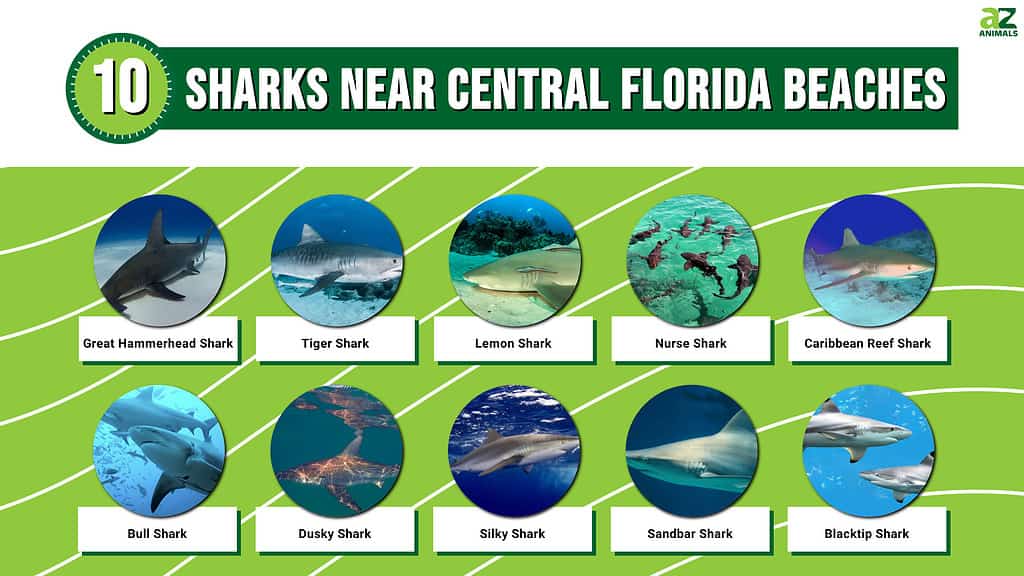
1. Great Hammerhead Shark
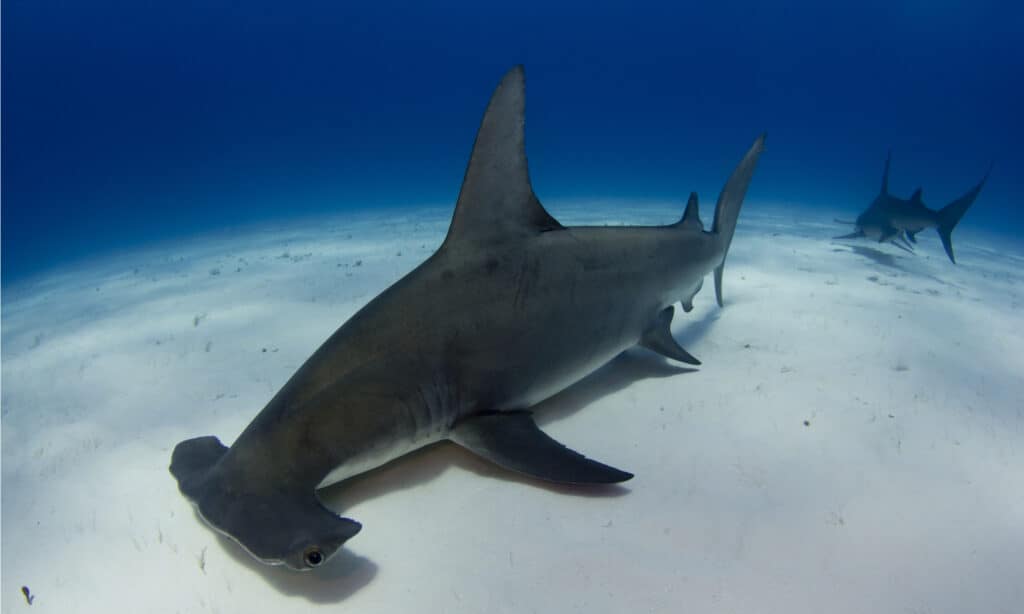
Despite their huge size, great hammerheads have never been responsible for a single human fatality.
©Matt9122/Shutterstock.com
One of the largest sharks near central Florida beaches is the great hammerhead. These sharks grow up to 20 feet long and frequent Florida’s waters from January through May. Due to overfishing, pollution, and the shark fin soup industry, they’re critically endangered.
2. Tiger Shark
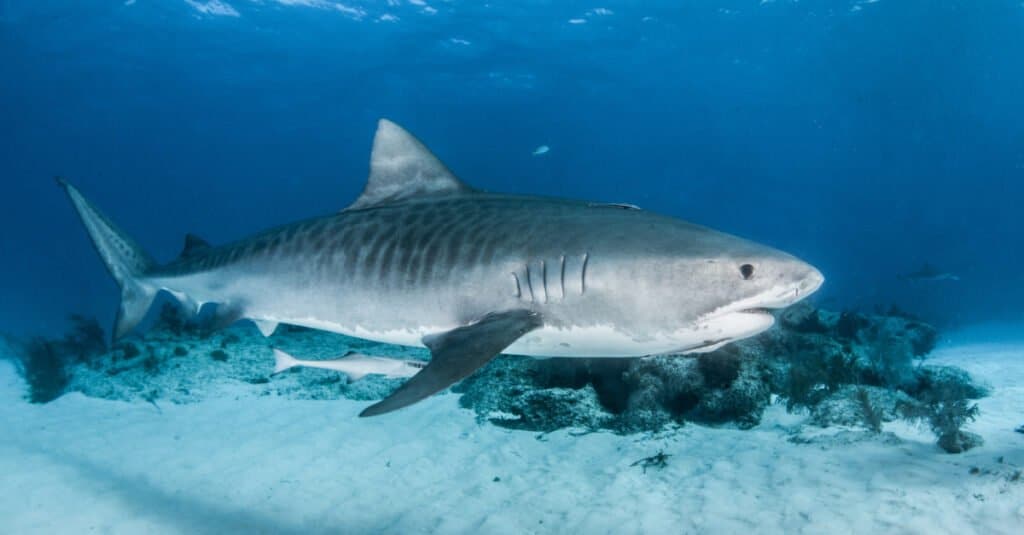
Tiger
sharks are one of the most majestic hunters of the ocean.
©iStock.com/Divepic
If you’re looking for an impressive and beautiful apex predator, look no further than the tiger shark. These sharks, which can grow up to 14 feet long, swim Florida’s waters from December to July. Tiger sharks are considered near threatened, which means they’re at risk of becoming vulnerable to extinction.
3. Lemon Shark
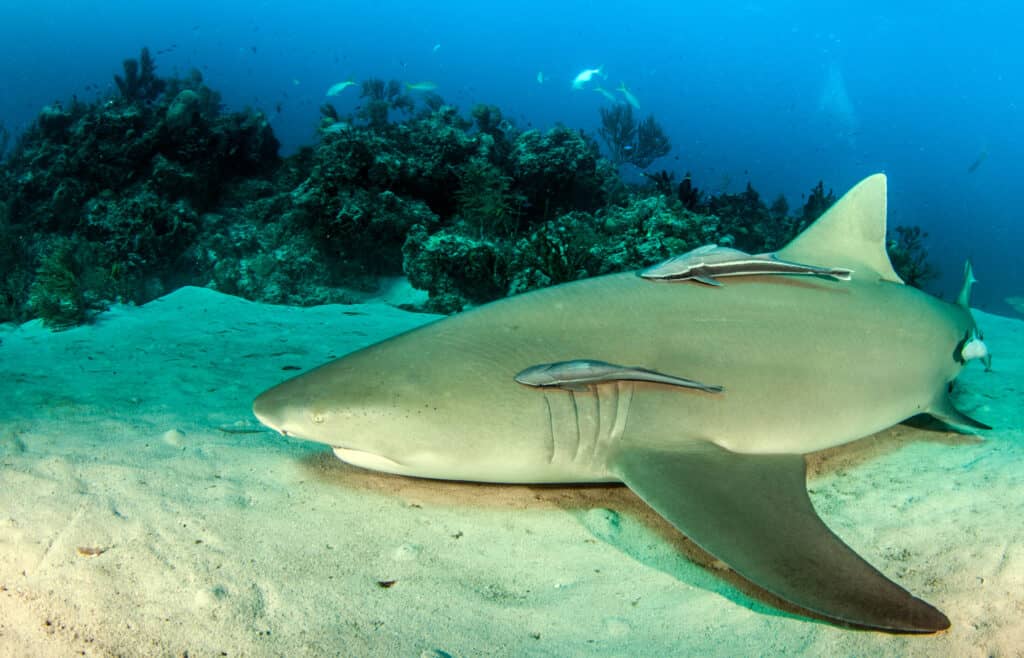
Lemon sharks often live in large groups and hunt mainly at night.
©iStock.com/Divepic
Some of the gentlest sharks near central Florida beaches are Lemon sharks. They live in the waters off Florida year-round. These sharks grow up to 11 feet long and feed mostly on fish. According to the International Shark Attack File, lemon sharks have been involved in 10 unprovoked attacks on humans, none of which resulted in the victim’s death. They’re currently listed as vulnerable to extinction.
4. Nurse Shark

The nurse shark grows to 9 feet long and feeds mainly on stingrays, small fish, mollusks, and other invertebrates. They swim in Florida’s waters year-round, though they’re most active at night. Like many sharks, they’re currently listed as vulnerable to extinction due to overfishing, pollution, and the shark fin soup industry.
5. Caribbean Reef Shark
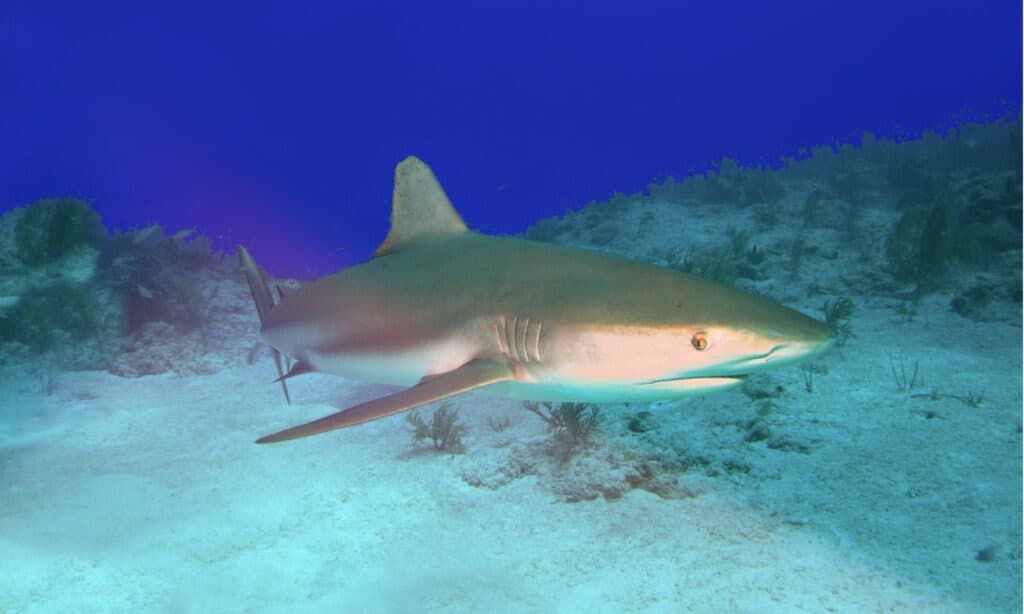
One of the most common sharks in Florida, the Caribbean
reef shark
, lives exclusively near reefs.
©iStock.com/Joseph M Bowen
Caribbean reef sharks near central Florida beaches are extremely common during the summer months. They grow up to 10 feet long, though they’ve been responsible for a few attacks on humans. These sharks eat bony fish, squid, octopus, and nautilus. They’re currently listed as endangered.
6. Bull Shark
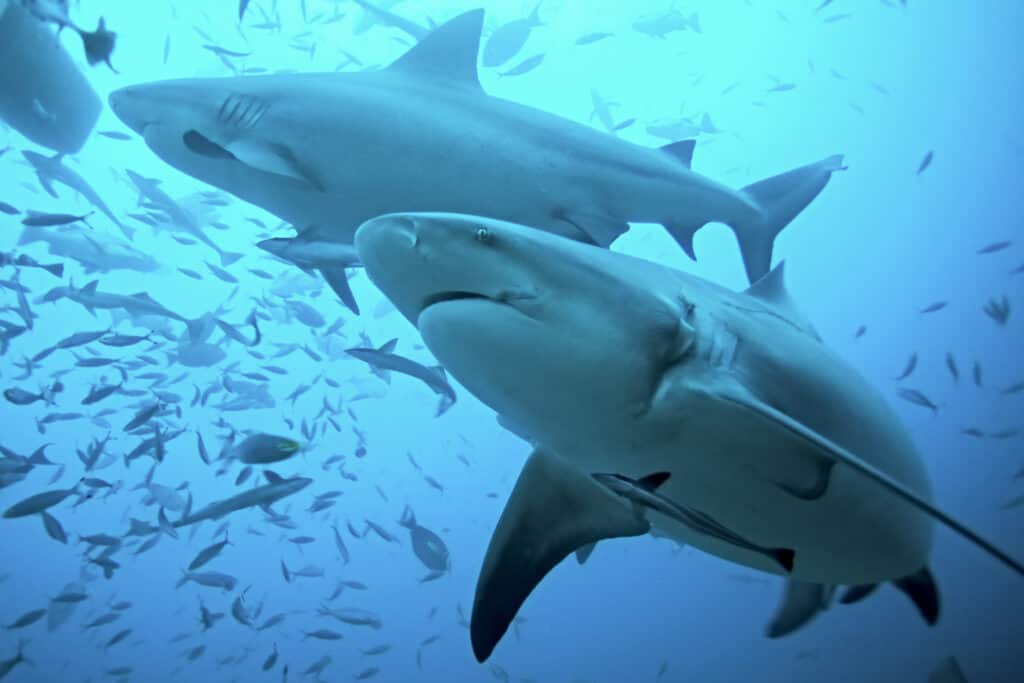
Bull sharks are the only species of shark that can survive in freshwater; they often swim inland via rivers.
©Martin Prochazkacz/Shutterstock.com
These sharks are common near Florida beaches between January and June. Along with tiger sharks and great whites, they’re one of the three species of shark responsible for the great majority of attacks on humans. Bull sharks grow up to 11 feet long. Like all sharks, bull sharks are apex predators and keystone species. They’re currently listed as near threatened.
7. Dusky Shark
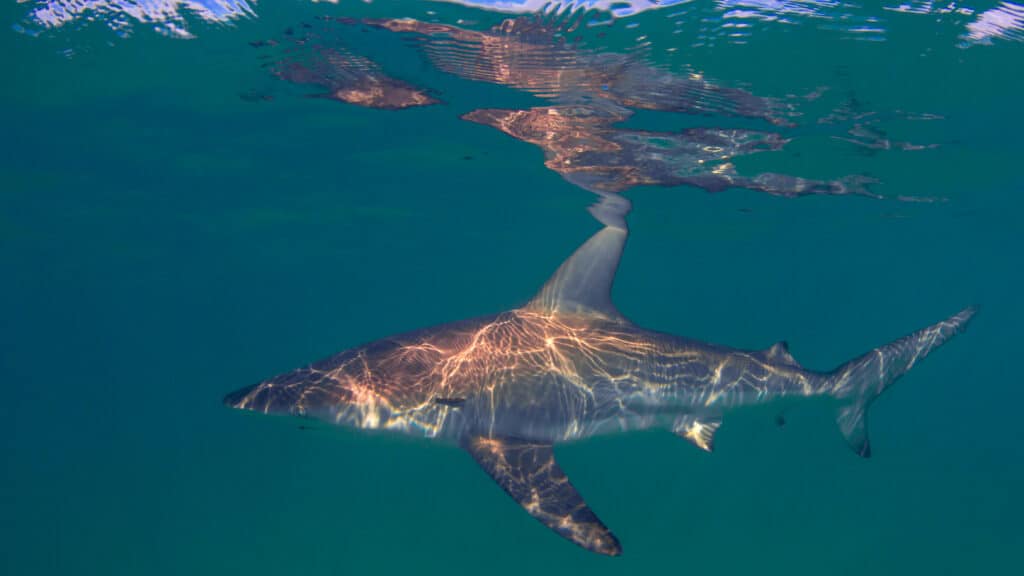
Dusky sharks belong to the same family as grey reef sharks,
spinner sharks
, and bull sharks.
©Rich Carey/Shutterstock.com
These sharks near central Florida beaches take up to 20 years to reach adulthood. They grow up to 14 feet long and swim in Florida’s waters from June through September. Dusky sharks have small dorsal fins and long pectoral fins. They eat all kinds of fish, including dogfish, barracuda, herring, needlefish, stingrays, groupers, grunts, tuna, and more. They’re currently listed as endangered. Like many sharks, their population has drastically decreased in recent decades due to overfishing and pollution.
8. Silky Shark
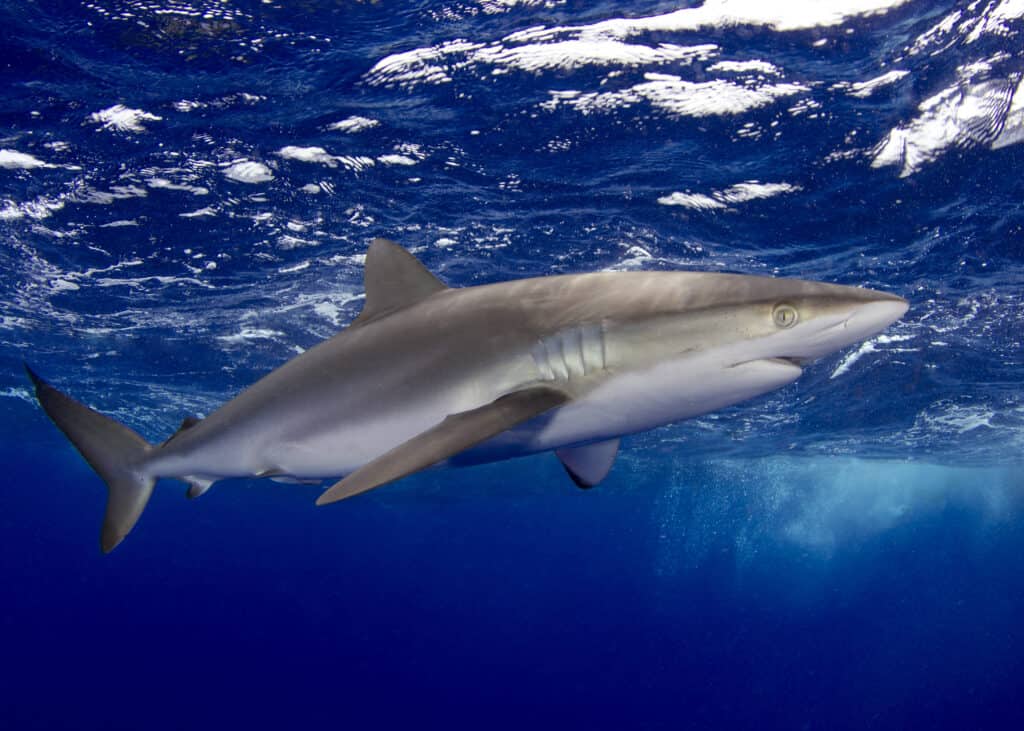
The silky shark is closely related to the dusky shark.
©Matt9122/Shutterstock.com
These sharks grow to a maximum length of about eight feet. They’re requiem sharks, like great whites and dusky sharks. Silky sharks don’t hunt coral reefs or the shallow sandbars just off shore. Instead, they hunt bony fish and cephalopods (like squid and octopus) near the continental shelf drop-off. They’re present off the coast of Florida from June to August. Silky sharks are currently listed as vulnerable to extinction.
9. Sandbar Shark

These sharks live only in shallow coastal waters.
©Vladimir Wrangel/Shutterstock.com
Like silky sharks, sandbar sharks are requiem species. They have large, straight dorsal fins and grow up to 8 feet long. They don’t live in the open ocean. Rather, they live in shallow coastal waters all over the world. These sharks near central Florida beaches can be observed from May through August. Sandbar sharks hunt the shallow coastal waters that beachgoers favor, but they only rarely bite humans. They’re currently classified as vulnerable. Sandbar shark populations have been especially hard hit by the shark fin soup industry due to their large dorsal fins.
10. Blacktip Shark

These sharks are named for the black tips on their fins.
©Gino Santa Maria/Shutterstock.com
Blacktip sharks are some of the most common sharks swimming off the coast of Florida. They can be seen from July through August and grow up to 8 feet long. Despite their size, these sharks are known to bite humans in the presence of fish, bait, or chum. They have streamlined bodies with black tips on their fins. Unlike great white sharks, which have serrated teeth designed for shearing, black tip sharks have thin, pointed teeth. These teeth are designed for holding onto slippery fish. Blacktip sharks are listed as near threatened. They live in tropical and subtropical waters all over the world.
Summary of 10 Sharks Near Central Florida Beaches
| Rank | Species |
|---|---|
| 1 | Great Hammerhead Shark |
| 2 | Tiger Shark |
| 3 | Lemon Shark |
| 4 | Nurse Shark |
| 5 | Caribbean Reef Shark |
| 6 | Bull Shark |
| 7 | Dusky Shark |
| 8 | Silky Shark |
| 9 | Sandbar Shark |
| 10 | Blacktip Shark |
The photo featured at the top of this post is © Carlos Grillo/Shutterstock.com
Thank you for reading! Have some feedback for us? Contact the AZ Animals editorial team.







